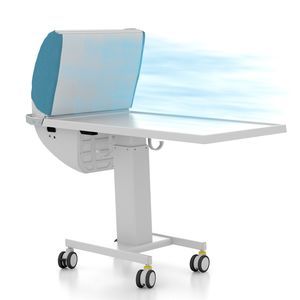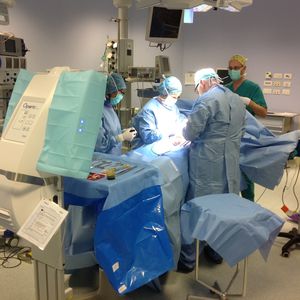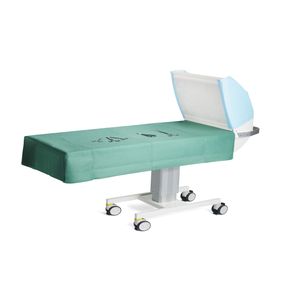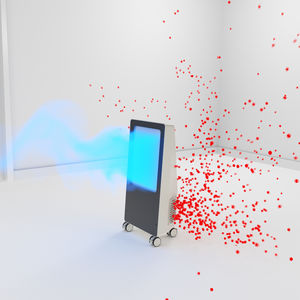
Módulo de fluxo laminar para sala de cirurgia TOUL Operiopara cirurgia oftalmológicapara mesa cirúrgica

Guardar nos favoritos
Comparar
Características
- Aplicações
- para cirurgia oftalmológica, para sala de cirurgia
- Configuração
- para mesa cirúrgica
Descrição
The sterile instrument table steristay maintains the sterility of the instruments and implants during surgery
A main problem especially in long operations is the contamination of surgical instruments due to human presence and their activity within the operating room. Even in more modern operating theatres with a large ceiling-mounted laminar flow system, the instruments are almost always prepared outside the sterile zone and have thus lost their sterility before they are used. After one hour of surgery, the bacterial loads on the instruments are already very high. For elderly or immunosuppressed patients or in the presence of prostheses, even a very low bacterial load is enough to cause infection or rejection of the prosthesis . In an conventional operating room you can expect about 50 to 200 CFU/m3. This number is rising the more people are in the operating room and the longer the operation last. As few as 10 colony forming units (CFU/m3) are sufficient to cause a deep infection*. Gosden PE, Mac GowanAP Bannister GC J. Hosp Infect 1998;
The sterile surgical instrument table maintains the sterility of the instrument table even during long operations and reduces therefore the risk of an surgical site infection SSI.
Focused laminar flow systems: the air is filtered through hepa filters free of microorganisms and then directed immediately onto the surgical instruments and surgical site. It is only then distributed throughout the operating theatre. This protects the critical area of the operating theatre, i.e. the instruments and the surgical site.
VÍDEO
Catálogos
Pesquisas relacionadas
- Purificador de ar
- Purificador de ar para estabelecimento de saúde
- Purificador de ar para hospital
- Purificador de ar germicida
- Purificador de ar UV
- Purificador de ar com filtro HEPA
- Purificador de ar móvel
- Purificador de ar de laboratório
- Purificador de ar para uso doméstico
- Purificador de ar compacto
- Purificador de ar com eliminação microbiana
- Purificador de ar portátil
- Purificador de ar para dentistas
- Purificador de ar de alto desempenho
- Bloco operatório
- Sala para o setor médico
- Purificador de ar UV-C
- Purificador de ar autônomo
- Purificador de ar para laboratório de prótese dentária
- Sala de cirurgia
* Os preços não incluem impostos, transporte, taxas alfandegárias, nem custos adicionais associados às opções de instalação e de ativação do serviço. Os preços são meramente indicativos e podem variar em função dos países, do custo das matérias-primas e das taxas de câmbio.









